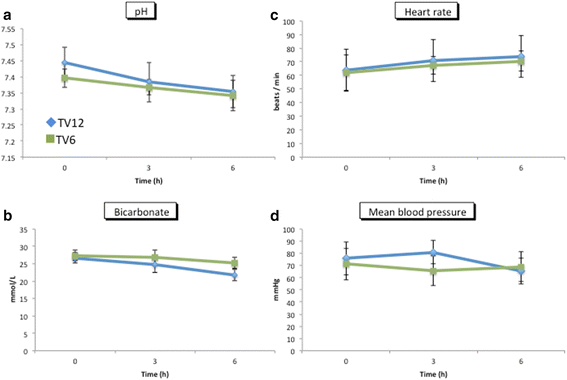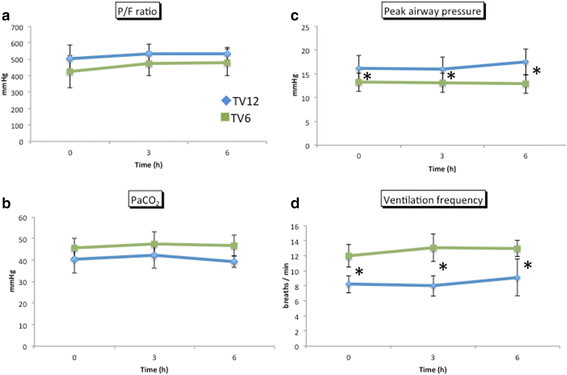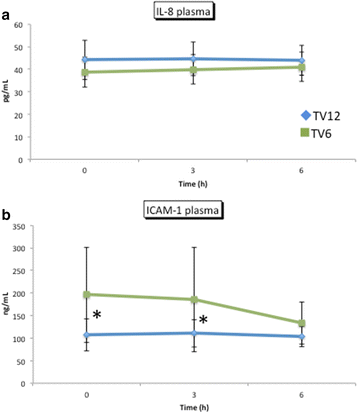Low tidal volume ventilation with low PEEP during surgery may induce lung inflammation
- PMID: 27473050
- PMCID: PMC4967315
- DOI: 10.1186/s12871-016-0209-y
Low tidal volume ventilation with low PEEP during surgery may induce lung inflammation
Abstract
Background: Compared to conventional tidal volume ventilation, low tidal-volume ventilation reduces mortality in cased of acute respiratory distress syndrome. The aim of the present study is to determine whether low tidal-volume ventilation reduces the production of inflammatory mediators in the lungs and improves physiological status during hepatic surgery.
Methods: We randomly assigned patients undergoing hepatectomy into 2 groups: conventional tidal-volume vs. low tidal-volume (12 vs. 6 mL•kg(-1) ideal body weight) ventilation with a positive end-expiratory pressure of 3 cm H2O. Arterial blood and airway epithelial lining fluid were sampled immediately after intubation and every 3 h thereafter.
Results: Twenty-five patients were analyzed. No significant changes were found in hemodynamics or acid-base status during the study. Interleukin-8 was significantly elevated in epithelial lining fluid from the low tidal-volume group. Oxygenation evaluated immediately after admission to the post-surgical care unit was significantly worse in the low tidal-volume group.
Conclusions: Low tidal-volume ventilation with low positive end-expiratory pressure may lead to pulmonary inflammation during major surgery such as hepatectomy.
Trial registration: The effect of ventilatory tidal volume on lung injury during hepatectomy that requires transient liver blood flow interruption. UMIN000021371 (03/07/2016); retrospectively registered.
Keywords: Cytokines; Hepatectomy; Micro-sampling Method; Systemic Inflammatory Response Syndrome; Ventilator-Induced Lung Injury.
Figures






References
-
- Amato MB, Barbas CS, Medeiros DM, et al. Beneficial effects of the “open lung approach” with low distending pressures in acute respiratory distress syndrome. A prospective randomized study on mechanical ventilation. Am J Respir Crit Care Med. 1995;152:1835–46. doi: 10.1164/ajrccm.152.6.8520744. - DOI - PubMed
Publication types
MeSH terms
Substances
Associated data
LinkOut - more resources
Full Text Sources
Other Literature Sources
Medical

